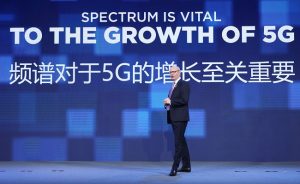The Mexican resort town of Cancun hosted the LATAM ICT Congress 2022 last week.
Organised by Huawei and supported by GSMA Intelligence, the event brought together ICT executives and regulatory leaders from across the region. Top of the agenda were digital inclusion and, in particular, the state of 5G readiness in the region.
Aside from attending the main conference and having the opportunity to deliver a keynote on 5G spectrum strategy in the region, I had the pleasure to participate in the 5G LatAm MBB CxO roundtable, a private session where a select group of executives from 13 operators in the region and other key ecosystem players exchanged views on the challenges and opportunities the rollout of 5G brings.
First of all, let’s set the context for the discussion.
The 5G market in Latin America is heating up. Brazil, Chile and Dominican Republic have recently completed 5G spectrum assignments. Ecuador and Colombia have announced plans to release spectrum. Mexico and Peru have launched services on current spectrum bands. Clearly, the number of markets looking at the 5G opportunity is and will continue to grow.
However, it is also clear the broader market context is challenging.
Over the last decade, economic value in the region (as elsewhere) has shifted to internet companies. As the 2021 GSMA Intelligence consumer survey shows, consumers are willing to pay extra for their 5G mobile subscription compared with what they pay for their current 4G subscription. But does this uplift justify the additional investments required? Possibly not on its own, although of course an important part of the 5G investment case is the greater cost efficiency the networks will deliver when dealing with growing data volumes when compared with 4G.
With all that in mind, what were the key strategic questions at the forefront of the minds of top executives in the region during the roundtable? What are the key factors they are considering including timings and strategies to launch (then make money from) 5G services in their markets?
During the roundtable, three main factors stood out: spectrum; networks; and the search for new revenue streams.
Spectrum
Participants highlighted affordable and contiguous spectrum as the engine of 5G. The technology will require additional spectrum in low-, mid- and high-bands. However, if additional spectrum is linked to additional costs, this will make the investment case for operators even more challenging, potentially forcing a delay or scaling back of investment decisions.
Unfortunately, the evolution of spectrum costs in the region in the last decade is a cause of concern, growing much faster than revenue. As a recent GSMA Intelligence study shows, the total cost of spectrum as a percentage of recurring revenues (CPRR) reached a historical maximum of 4.5 per cent in recent years, with the value close to a whopping 15 per cent in some markets.
The success of 5G spectrum strategies in Latin America will, therefore be determined by the availability and affordability of mid-band spectrum in large contiguous blocks. The 3.5GHz band is a priority for initial deployments while 6GHz can be good choice in the medium term to provide additional mid-band capacity.
Networks
Non-standalone (NSA) 5G means every 4G dollar today can be a 5G dollar in the near future.
Investments in 4G are still very important in the region today, with network coverage and adoption still experiencing important growth in many markets.
A strong LTE network is, of course important for initial NSA 5G deployments and that was claimed by many of the participants in the roundtable.
Of course, network modernisation in the areas of massive MIMO, sites, antennas, energy efficiency, core and cloud strategy are all needed for 5G networks. However, strengthening the existing LTE layer is essential for both 4G as well as the future 5G experience and a main priority for most operators.
New services
Finding the right application is key: new 5G revenue opportunities are a first order question for telecom operators in the region. There is clearly the potential for significant revenue uplifts when considering the introduction of new use cases. On the consumer side, this includes cloud-based gaming, e-sports, enhanced video services and extended reality applications.
Operators will also need to look beyond core consumer services and consider additional use cases: FWA and enterprise are important considerations in most markets.
The arrival of 5G has revamped FWA and is making it a competitive solution versus FTTH and cable, particularly in areas were fibre is not yet available. As recent GSMA Intelligence research shows, the 5G FWA opportunity is significant and some operators in the region are already active, for example Claro in Peru.
Operators are also taking small steps to offer a growing portfolio of products as part of bundled or integrated solutions for enterprises and verticals.
Overall, the roundtable discussion provided key insights as to the main factors needed to build solid 5G investment cases in the region.
Did we find conclusive and definitive solutions to the best possible strategies to successfully deploy 5G in Latin America? Not quite. These will differ in every market. However, it hinted towards the main elements that are at play in this early phase of the 5G rollout in the region, including what we are likely to see happening next as operators start ramping their focus on 5G investments.
– Pau Castells – head of economic analysis, GSMA Intelligence
The editorial views expressed in this article are solely those of the author and will not necessarily reflect the views of the GSMA, its Members or Associate Members.
Subscribe to our daily newsletter
Back
Source of Article



